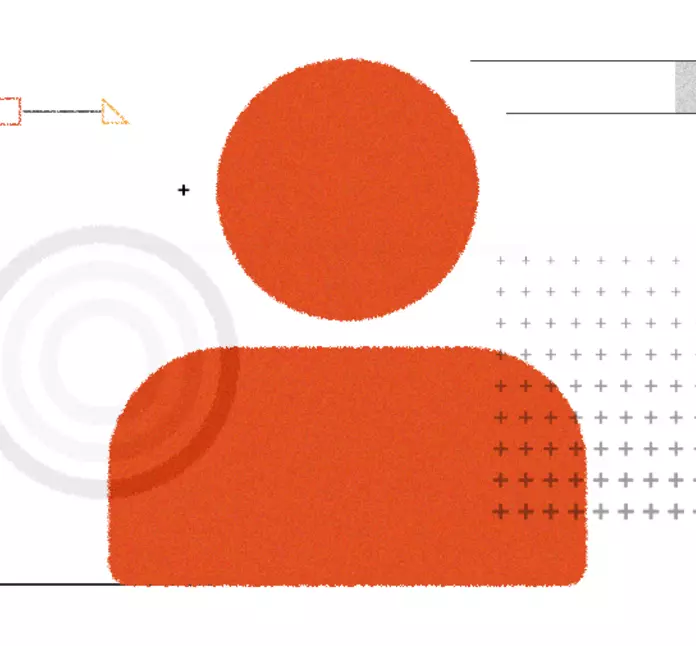Whether you work as a web developer, a content creator or a graphic designer, the User Experience (UX) aspect of your project is just as important as its functionality and back-end stability. According to Small Biz Genius, 88% of online users will outright leave a website and look for another due to bad UX, with 54% of users leaning toward personalized content writing rather than a cold and calculated approach from the businesses in question.

Additionally, Tech Jury reported that 94% of users admit that their first impressions of a business are based purely on its aesthetic appeal, leading to stats that showcase a 70% higher cart abandonment rate with websites which lack proper UX optimization. Thus, striking a good balance between pleasing visuals and valuable written content is essential not only to rank well with Google but also to gain a recurring user base for your client’s website. With that, let’s take a look at what makes UX writing so uniquely suited for lead generation and SEO, as well as several practical ways in which you can utilize it going further into 2020.
The Reasons Why UX Writing Is Essential
While we continue to hear praise in regards to UX design, its definition and practical benefits of implementation are often left vague and undefined. As its name suggests, UX writing revolves around “user experience”, or the process of individual visitors’ consumption of your content, website navigation and post-engagement activity.
According to Michele Justine, Head of UX Design at Studyker: “UX is everything and anything on your website or app created with user interaction in mind. From your landing page ad placement to conversion inquiries and product/blog navigation, UX writing will find its place throughout your development process.”
In order to break things down into basic elements, we can list several crucial aspects of UX writing which are particularly noteworthy in regards to website navigation and subsequent user conversion:
- Headings and subheadings
- Navigational calls to action
- Instructional messages and popups
- Success and failure messages
- Navigation bar, header and footer
- Buttons and hyperlinks for subscription
Paying particularly close attention to the above-listed elements of web development will allow you to redefine your project’s UX and facilitate far more engaging interaction for the global audience. In doing so, several concrete benefits will manifest for the website going forward:
- Content personalization and unique brand personality development
- Higher user loyalty, brand advocacy and word of mouth
- Minimized bounce and abandonment rates
- Seamless, user-friendly navigation for native and non-native speakers
- High ROI on the initial time/resource investment in regards to UX planning
UX Writing Tips & Tricks
Define your Target Audience
In order to take full advantage of UX writing in your web design project, you should start with defining your target audience and its wants/needs. Crafting the navigation elements, and subsequent content marketing strategy, for the website to appeal to its demographic will require proper planning from day one. As such, some of the audience-centric elements you should consider before you approach UX design include:
- Age group and gender
- Personal and professional lifestyle choices
- Hobbies, beliefs and entertainment preferences
- Social media use frequency and platform preferences
Balance White Space With Written Content
When it comes to creating a website layout with a good flow of information for the visitor, it’s worth pointing out the importance of white space. It’s true that valuable content should find its way to the reader as soon as possible and in no more than 1-2 clicks from the landing page itself.
However, white space can add much-needed breathing room to your web development project and make the business more confident and professional for the visitors. Utilizing writing tools such as Write Scout and Evernote will enable you to create short and informative navigation elements while also maintaining a good balance of white space against written content to further elevate the site’s UX design aesthetic.
Rely On Standardized Industry Lingo
While creating a unique voice and personality for your website should be a priority, it’s also pivotal that your target audience understands the UX writing you’ve put in place. This makes standardized industry vocabulary and familiar phrases more than welcome throughout your navigation and call to action elements.
By ensuring that your UX writing is familiar yet sprinkled with a new twist which offers a breath of fresh air, you will successfully entice the visitor to stick around, convert into a lead and even advocate for the website to their social circles. Failing to do so and steering too far toward “original for the sake of original” will have adverse effects on your web development project and lead to an increase in bounce and abandonment rates – strive for unique yet familiar and the audience will respond positively to your efforts.
Augment Multimedia With Alt-Tags
Striking a good balance between multimedia content (images, videos, animation, etc.) and written text is a great way to elevate your website’s UX appeal across the board. UX writing can directly impact your multimedia content’s performance, both with visitors and SEO, by introducing localized alt-tags to the website.
Alt-tags, descriptions, transcripts and other written content which makes multimedia more accessible and understandable to a wider range of users will improve the website’s usability and mass appeal exponentially. Dedicated writing platforms such as Classy Essay and Readable can be utilized to great effect in creating alt-text content and calls to action which will direct the visitor to that content going forward.
Perform Regular Website Audits
Once your UX writing elements are in place, you should make it a habit to perform regular audits of content, navigation elements, hyperlinks and their related materials. Website audits ensure that every segment of a web development project functions as intended and it will allow your client to stay relevant with search engines longer than otherwise.
Website audits can be performed through tools such as Google Lighthouse which will allow you to compare your UX writing and design choices against popular industry trends quite efficiently. Make site maintenance a scheduled habit and your projects will perform that much better for the added effort.
UX Writing Mistakes To Avoid
Lastly, now that we have a clearer idea of how UX writing can be utilized in web development projects, let’s point toward several pitfalls worth keeping in mind. While writing tools such as Top Essay Writing and Hemingway Editor can do a lot to improve your website’s written content and navigation, certain mistakes can still happen on occasion.
- Robotic tone of voice
- Lack of, or confusing calls to action
- Poor proofreading and spelling
- Reliance on dark pattern design trends
- Lack of meaningful content beyond navigation
- Copy/paste UX writing from other successful websites
To Summarize
Whether from the standpoint of a web developer, a site admin or a content creator, it’s easy to see the relevance and potential lead generation opportunities found within UX writing. Start your UX design efforts by outlining who your audience really is and how you can avoid the above-mentioned errors in writing before taking any concrete steps toward content creation. In doing so, you will facilitate a more cohesive experience for your site’s visitors and enjoy a better, pro-consumer reputation on the web as a result.
Subscribe
Related Blogs
UX Best Practices for Website Integrations

Website Integrations determine whether users stay engaged or abandon a site. I experienced this firsthand with a delivery…
How design thinking acts as a problem solving strategy?

The concept of design thinking is gaining popularity these days since people across different industries are using it as a…
10 major challenges that come across during an agile transformation

It’s no longer a mystery that agile was created as a response to the various concerns that the traditional waterfall…




